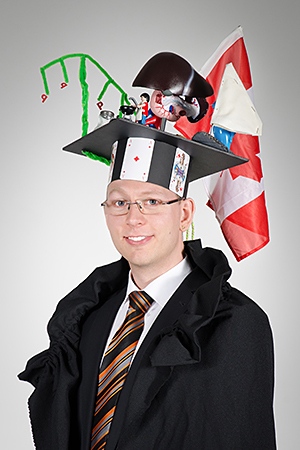Arne Militzer
Boosting Methods for Automatic Segmentation of Focal Liver Lesions
Abstract
Over the past decades, huge progress has been made in treatme nt of cancer, decreasing fatality rates despite a growing number of cases. Technical achievements had a big share in this development. With modern image acquisition techniques, most types of tum ors can be made visible. Automatic processing of these images to support diagnosis a nd therapy, on the other hand, is still very basic. Marking lesions for volume measurement s, intervention planning or tracking over time requires a lot of manual interaction, whi ch is both tedious and error prone. The work at hand therefore aims at providing tools for the aut omatic segmentation of liver lesions. A system is presented that receives a contras t enhanced CT image of the liver as input and, after several preprocessing steps, decides fo r each image voxel inside the liver whether it belongs to a tumor or not. That way, tumors are not o nly detected in the image but also precisely delineated in three dimensions. For the d ecision step, which is the main target of this thesis, we adopted the recently proposed Prob abilistic Boosting Tree. In an offline learning phase, this classifier is trained using a num ber of example images. After training, it can process new and previously unseen images. Such automatic segmentation systems are particularly valu able when it comes to moni- toring tumors of a patient over a longer period of time. There fore, we propose a method for learning a prior model to improve segmentation accuracy for such follow-up examinations. It is learned from a number of series of CT images, where each se ries contains images of one patient. Two different ways of incorporating the model i nto the segmentation system are investigated. When acquiring an image of a patient, the sy stem can use the model to calculate a patient specific lesion prior from images of the s ame patient acquired earlier and thus guide the segmentation in the current image. The validity of this approach is shown in a set of experiments on clinical images. When comparing the points of 90% sensitivity in these experiment s, incorporating the prior im- proved the precision of the segmentation from 82.7% to 91.9% . This corresponds to a reduction of the number of false positive voxels per true pos itive voxel by 57.8%. Finally, we address the issue of long processing times of cla ssification based segmen- tation systems. During training, the Probabilistic Boostin g Tree builds up a hierarchy of AdaBoost classifiers. In order to speed up classification duri ng application phase, we mod- ify this hierarchy so that simpler and thus faster AdaBoost cl assifiers are used in higher levels. To this end, we introduce a cost term into AdaBoost tra ining that trades off dis- criminative power and computational complexity during fea ture selection. That way the optimization process can be guided to build less complex cla ssifiers for higher levels of the tree and more complex and thus stronger ones for deeper level s. Results of an experimental evaluation on clinical images are presented, which show tha t this mechanism can reduce the overall cost during application phase by up to 76% withou t degrading classification ac- curacy. It is also shown that this mechanism could be used to o ptimize arbitrary secondary conditions during AdaBoost training.
